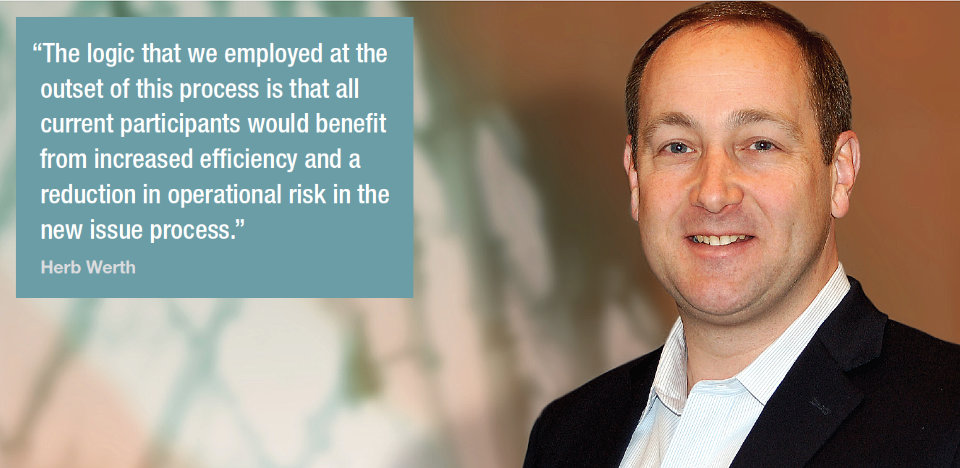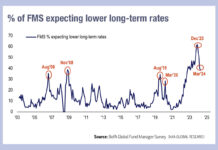Herb Werth, Managing Director, IHS Markit
As capital markets innovators, one area where we’ve spent considerable time recently has been new issuance. At first glance, improving this part of the market seemed like “no brainer” – no one seemed particularly happy with the archaic methods of communicating deal terms and placing orders, and all parties seemed to have something to gain from thoughtful innovation. To a large extent, this was true and was proven by strong adoption of our Investor Access platform. In just over two years, 42 banks and over 300 investors have come on board, using the platform to analyse deals and place orders on over 90% of investment grade corporate bond issues in the EUR and GBP markets. As far as a product launch goes, it was a success, and to continue the analogy, it achieved escape velocity and a stable orbit. We’re not done yet, but we learned a few lessons along the way, and this seems like a good point to reflect on what we learned.
One of the reasons the market accepted a new platform in a highly competitive space is because our thinking and design were flexible. It would have been easier to build a closed system of proprietary applications – but the reality is that syndicate banks use a variety of technologies, from commercial book-building software (that we’ll happily provide) to sophisticated home-grown DCM and syndication systems that they maintain themselves. From day one, it was clear that Investor Access must integrate with the technologies that each bank uses, not only to accelerate adoption, but because it was the right long-term approach for the broader market – a closed ecosystem would likely reduce the overall community we were trying to serve.
On the buy side there is even more technical diversity. The majority of buy-side OMS systems are outsourced, with multiple differences between the capabilities of various solutions, and when you add internal systems to the mix, it makes the buy-side equation more complex than what the sell side faces. Here, again, flexibility was key. We provide investors with several flavours of the same core solution, varying mostly by how and where we integrate. And the client determines this, based on their workflow needs.
As a result, two things have happened: more participants are able to join this new platform in a way that is sympathetic to their existing workflows and technologies, and traditional methods can co-exist with the improved workflows, minimising disruption in the capital raising process.
Where do you go from here?
As we enter new markets, we’ve been asked to comment on our thinking regarding competition in this space – specifically, what would happen if competitors to this platform emerged? Wouldn’t an incumbent with a widely adopted platform be inclined to protect it by walling-off the ecosystem we created? Our answer is no. It simply isn’t the best thing for the market, or for our business.
What does the end state of this market look like? The real answer here is that this must be decided by the market itself – and markets have buyers, sellers, and suppliers. In the bond market that means investors, syndicate banks, and issuers. As a solution provider, we win by being in-tune with the market, anticipating and meeting its needs.
The logic that we employed at the outset of this process is that all current participants would benefit from increased efficiency and a reduction in operational risk in the new issue process. Creating barriers (intentionally or inadvertently) that would exclude some of these participants would really be to the detriment of advancing the progress of the broader market. So, we are committed to being open. But what does that mean?
Guiding thoughts
All the ideas we are about to discuss are applicable not only to primary markets but also apply to the broader topics of technical innovation and competition. These are some of the key principles that guide us:
“Don’t force the user to make a technology bet or employ multiple technologies”– a hallmark of good integration between different infrastructures is that the end user can benefit from the network and its core functions regardless of the technological decision they make individually.
“Anyone on the network should be able to access anyone else, assuming they want to be contacted”– so, an investor who has a relationship with a bank should be able to get to that bank, regardless of intervening infrastructure (and vice versa).
“Base integration on standards and a sound design centred on performance, security and scale”– in other words, build your platform from the start as if you might integrate someday – even if it’s not currently clear who that might be with.
Let’s take all of that and apply it to something we do in our everyday lives: when you send a text message to a friend, are you concerned with the brand of phone they have, or the mobile network they are on? No. If you simply know that person’s contact information, your message flows through the network and almost instantly appears on your friend’s device. You might prefer the features of the texting application on your brand of phone, or the terms of the messaging plan of your service provider – and you can have that. You no longer worry about compatibility, because the vendors in between have figured it out for you, and as a result, not only do you get what you want at an affordable price, the ubiquity of the solution has led to an increase in message volume that few would have imagined. This thereby benefits the providers in between, and we all benefit from a new and more efficient way of communicating. If texting your friend required you to buy a particular pricey new phone, or carry two devices, subscribe to multiple networks, or simply even know which network your friend is a subscriber to, we’d be in a very different place than we are today.
To bring this back to the capital markets, we expect that now that the new issuance process is benefiting from new technologies and workflows, additional solutions are likely to emerge. That is healthy and predictable – it is also likely to bring focus to other specialised asset types and workflows that could benefit from innovation. There is no reason why there must (or should) be a single solution, provided that new solutions serve the needs of the market and do not create additional hurdles for participation. The idea that multiple services could communicate in a secure and standardised way is truly exciting.
What does good look like?
I would argue that the principles outlined above could be used as a quick litmus test to determine if a solution will benefit the market or, is simply using technology to exert influence on how deals get done.
Remember, investors, syndicate banks and issuers are all vital to the new issue market and the needs of each should be considered and balanced as this market evolves.
It is an exciting time in the primary markets: new technologies are being applied, efficiencies are being realised, and risk is being reduced. To continue the process and realise even more benefits in the future, all participants must take an active role in making sure that the technological landscape that is taking shape is the right thing for the market as a whole.
©TheDESK 2019























